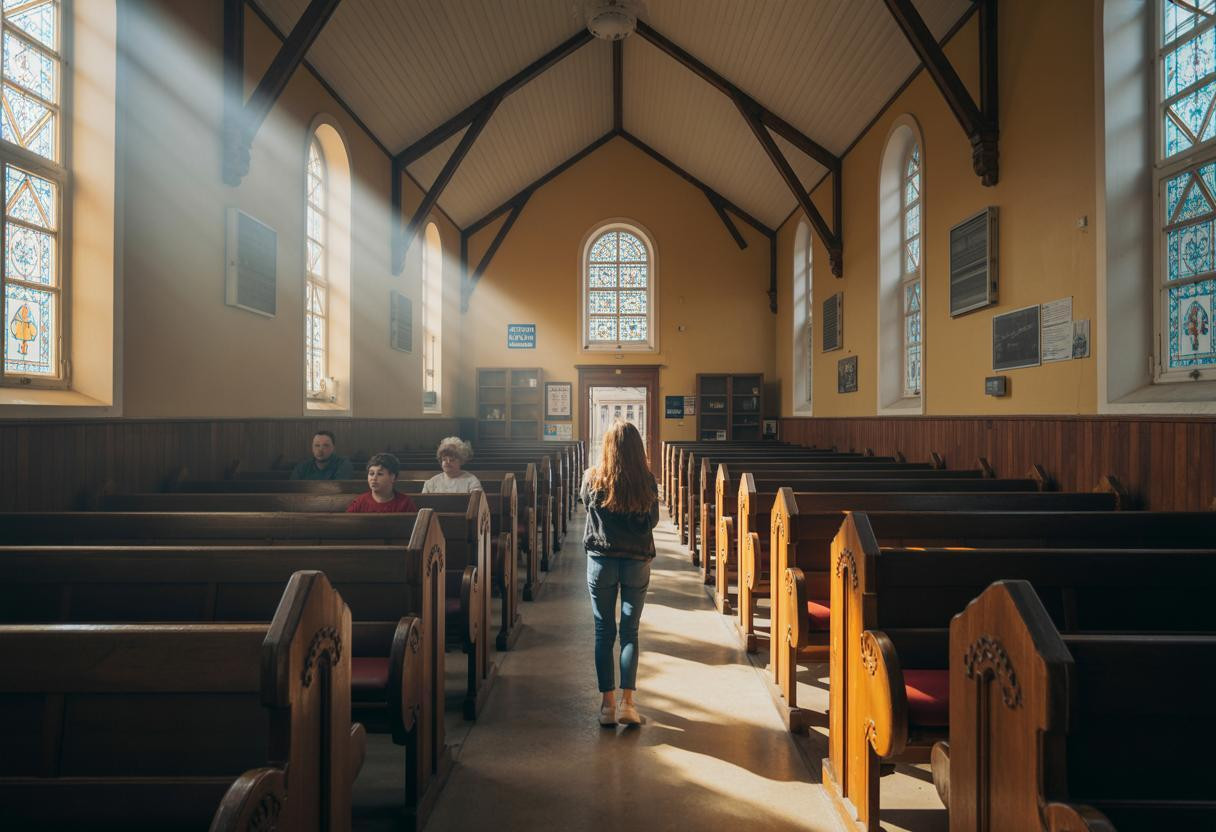Every single day in America, 16 churches permanently close their doors—that’s nearly 6,000 sacred spaces lost annually. But here’s what most people don’t realize: many of these abandoned sanctuaries are experiencing remarkable resurrections as vibrant community hubs that serve more people than they ever did as traditional churches.
The surprising scale of America’s church transformation
The numbers tell a story that’s both sobering and hopeful. While 15,000 additional church closures are projected for 2025 alone, innovative communities are discovering that empty pews don’t have to mean empty buildings. The United Church of Christ documented 104 congregations closing between 2020-2022, yet their research revealed something unexpected: these properties didn’t disappear—they evolved.
In rural Appalachian communities, former Methodist churches now serve as polling stations and food distribution centers. Urban sanctuaries in Portland and Chicago have become affordable housing complexes where seniors live alongside the same stained glass windows that once witnessed their weddings. This isn’t just adaptive reuse; it’s architectural resurrection with a secular soul.
Three breakthrough discoveries about repurposed sacred spaces
Community centers outperform traditional churches in daily engagement
Research shows that repurposed churches hosting multiple community functions see 300% more daily foot traffic than they experienced during their final years as worship-only spaces. The Springhouse Ministry Center in New England exemplifies this trend, consolidating three struggling congregations into one dynamic facility that serves both spiritual and civic needs.
These hybrid spaces succeed because they address what urban planners call “third place” needs—neutral gathering spots beyond home and work where authentic community connections flourish. Much like how community spaces that celebrate identity rather than hide it create environments where people feel genuinely welcomed, repurposed churches remove barriers that once limited participation to active congregation members.
Rural transformations solve multiple infrastructure gaps simultaneously
In areas where public services are scarce, former churches are becoming one-stop community solutions. A single repurposed building might house a health clinic, childcare center, senior meal program, and voting location—services that would otherwise require separate facilities and funding streams.
This consolidation model proves especially valuable in communities where adaptive strategies that reduce maintenance while transforming outcomes become essential for sustainability. One building, multiple purposes, shared operational costs.
Housing conversions generate surprising economic returns
Converting churches into affordable housing units costs 40% less than new construction while preserving architectural character that increases property values in surrounding neighborhoods. The high ceilings, large windows, and open floor plans that once accommodated congregations translate perfectly into spacious, light-filled living areas.
The hidden financial opportunity in every closure
Each closing church represents approximately $140,000 in annual community service value through volunteer time and in-kind donations. Smart communities aren’t just mourning these losses—they’re capturing and redirecting this economic energy.
The most successful repurposing projects involve partnerships between former congregations, local nonprofits, and community development organizations. These collaborations often benefit from financial strategies for community organizations that maximize limited resources while creating sustainable revenue streams.
Practical steps for communities facing church closures
Start conversations before the doors close
The most successful transformations begin 18 months before final services. Early planning allows time for community input, zoning approvals, and funding applications. Contact your local planning department about adaptive reuse incentives—many cities offer tax breaks for projects that serve public needs.
Focus on spaces that solve existing problems
Identify what your community lacks most: affordable housing, meeting spaces, or social services. The buildings that thrive post-conversion address genuine local needs rather than pursuing abstract community development goals.
Preserve elements that matter to neighbors
Successful projects often maintain architectural features that hold emotional significance—stained glass windows, bell towers, or garden spaces. These elements help community members embrace change while honoring history.
Why these transformations represent America’s future
The church-to-community-center phenomenon reflects a broader shift toward flexible, multi-use civic infrastructure. As traditional institutions evolve, the buildings that once housed them are becoming more vital to community life than ever before. Empty pews aren’t symbols of decline—they’re invitations for innovation.
